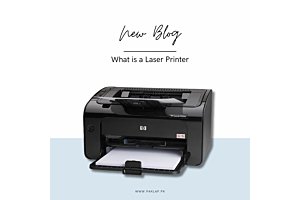Canon vs Nikon cameras
Are you a newbie in photography looking for the perfect first camera? Or an experienced photographer wanting to upgrade to a professional level camera? It's true that two very strong candidates in this regard would be Nikon and Canon. Although there are an abundant number of potential options, the two said companies are the toughest competitors. Statistically speaking, each of them arguably offers the fastest and easiest controls while not compromising on the image quality. What else do you need? That sounds perfect, doesn't it? Well yes, it does. And that itself poses to be a demanding problem, choosing between the two becomes a decidedly challenging struggle! But now that you are here, you can avoid the extensive research for yourself. Read on to reach a resolute conclusion and make the wise decision for yourself.
Image quality
Both Canon and Nikon use excellent sensor technology which allows for their cameras to have outstanding image quality. While the result may be noticeably different in terms of colour and resolution, the images both turn out have no parallels.
The majority of Nikon's latest DSLRs have used sensor technology which doesn't involve the optical low-pass filter. This brings a number of advantages to the image quality. The light doesn't have to pass through this filter now and the images produced are much higher in quality, resolution, depth and they also work way better in low light conditions.
A great pick would be Nikon D7500 which has a decent resolution of 20.9MP. It has an optical viewfinder and works magic in low light situations.
Canon, on the other hand, rather offers a much more increase in the megapixels while a a lot their cameras still have the optical low-pass filter. There are cameras which offer a colossal 50MP or around. This makes the image quality much better than its counterparts. The colour, resolution and performance is too good to be overlooked.
The Canon EOS 90D guarantees a whopping resolution sitting at 32.5 MP. Simultaneously, it allows for a hundred percent optical view and has impressive video quality with no crop. Given the price range, it's undoubtedly a great option if not the best.
For professional photographers and learning camera enthusiasts alike, both Nikon and Canon offer the best of best image quality and resolution. This makes choosing between them much harder, not to mention the enormous range of cameras one can find in each.
Video quality
Just like image quality, goo video quality is also equally important in today's age of modern technology. Photography is not just limited to the luck of taking one time good quality images but extends to the well-use of the camera for producing a string of images, better known as a video.
Canon offers amazing video technology and was the first of the two to introduce autofocus. The cameras re-focus while recording.
Nikon, on the other hand, introduced autofocus much later. They have the feature of continuous autofocus. Some of their later cameras have a fps frame rate of 60fps while their canon equivalents have 30 fps.
It is a never ending debate as to which brand has produced the better video quality cameras. It is, however, generally considered that Canon wins in this regard while Nikon has surely come close with all the latest additions and improvements.
Battery life
While shooting, one certainty doesn't want to worry about the camera shutting down because the battery used up. This brings in the need of a good battery life. A good camera lasts at least until its user is satisfied with the perfect image.
Canon traditionally offers a decent battery life. It can last upto a wide range of hours.
Nikon, however, has a much better battery life. It usually lasts much more than a similarly priced Canon camera.
For instance, Nikon D7200 has double the battery life than that of Canon T65 and both of them are similar in the price range.
Design
Canon and Nikon widely differ in their designs. This is why holding either of them feels different and allows you to have a unique experience. Not only the grip in hands, but the manuals, buttons and dials on the camera also stand out from each other.
Canon uses two manual modes labelled temperature value (av) and time value (tv).
Nikon, however, employs four manual modes namely aperture priority (A) , shutter priority (S) , program auto (P) and full manual (M).
The aperture priority performs the same function as the aperture value and the shutter priority is the same as time value. Aperture priority is used to set the aperture while shutter priority is employed to adjust the speed of the shutter.
To put it simply, it is largely a matter of one's own comfort. If you're considering buying a camera, it is the best option to walk into a camera shop and hold both of them individually in your hands and see for yourself. The one that you feel comfortable with, will help you decide on a final choice.
Lenses
Owing to the long chain of cameras, each brand offers a wide range of lenses. They differ in focal lengths and other similar features. Both have all sorts of lenses but a specific one might demand looking at a thorough search as to which brand offers the better lens.
Canon has some huge but very pricey lenses for its mirrorless camera range. Nikon, on the other hand, offers smaller and more compact camera lenses. Each brand offers an adapter which can be used to mount a DSLR lens onto the mirrorless camera if the need arises.
A thorough look at the range of lenses each company offers can help one decide what one needs to get. Nevertheless, both companies offer great options.
Price
The price naturally depends on the quality in most cases. Both brands, therefore, offer cameras in all sorts of ranges with the beginner cameras usually around $50 or more.
The price gradually increases according to the quality increase. In the mirrorless range, for example, Canon offers a little cheaper camera than Nikon does. Same can be said for the lenses. Depending on the focal length and use, the pricing of the lenses also varies considerably.
It all comes down to image quality and the grip comfort. Both have some amazing options and taking a look at each yourself will surely help you make a final decision.
It is always safer to borrow and try shooting with both the cameras. This will help you in choosing between one of the two. And once you have decided for yourself, stick to the same brand. At the end of the day, whatever your choice may be, make sure to consult Paklap.pk for best prices and an impressive range of products.





